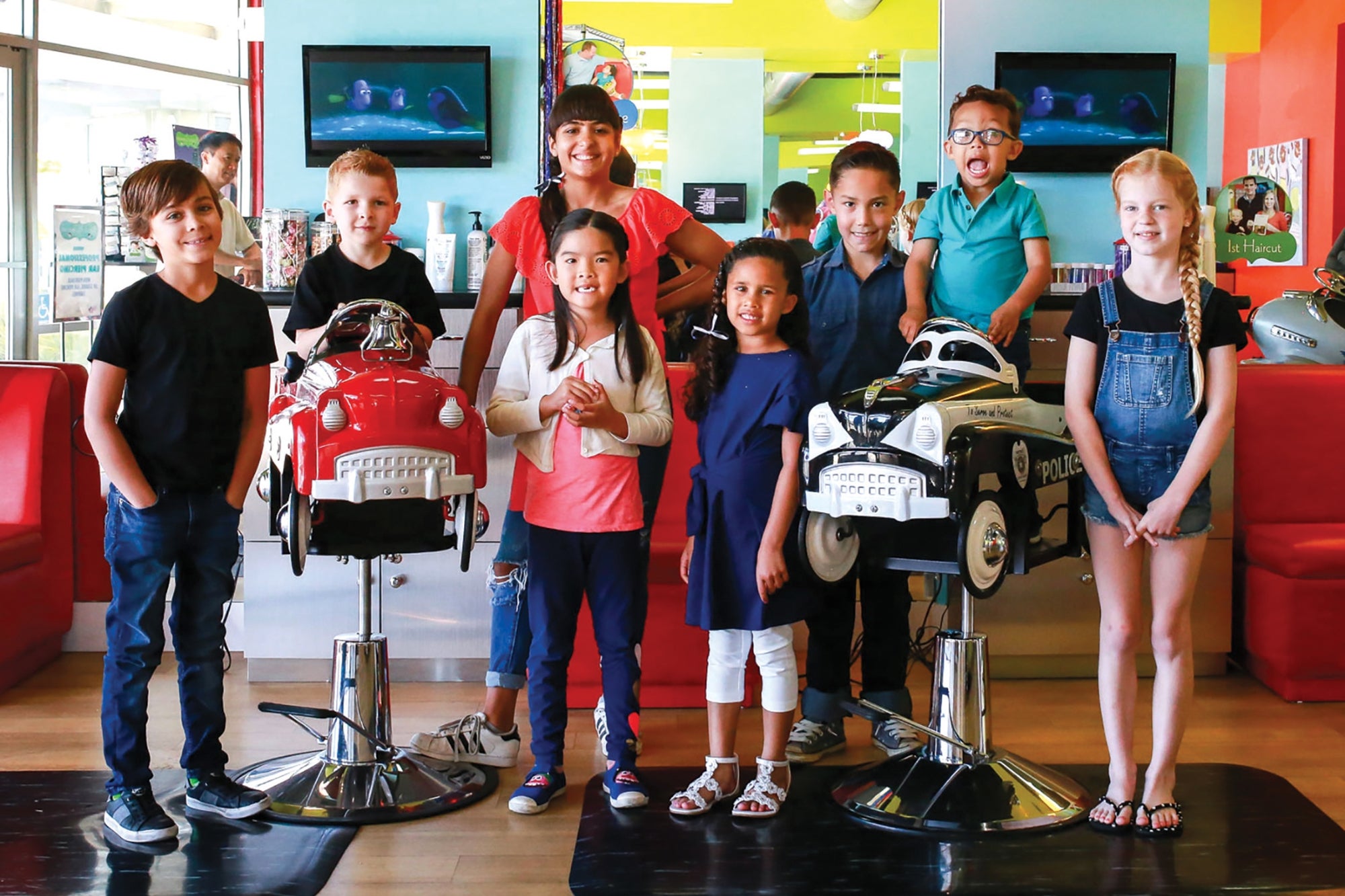In 2004, Wade Brannon was coaching his son’s T-ball team when another player’s mother asked, “You’re the ham guy, right?”
Well, he was the ham guy: He founded Heavenly Ham, built it up to $150 million in revenue with more than 200 franchises in 33 states, and then sold it to Honey Baked Ham. But by 2004, his role was Mr. Mom, caring for his 5-year-old boy and younger twin girls while his wife worked as a real estate attorney near their Atlanta home.
Parenting was rewarding but hard; his son had what he believes were sensory issues (common among young children), which made some tasks tricky. “I took him to my barber shop, and he screamed the whole time,” Brannon recalls. “Both of us would leave sweaty with hair stuck all over us.”
The T-ball mom, whose name was Nanette Adair, happened to have a solution for that: She’d opened a kids salon called Pigtails & Crewcuts, and Brannon had just taken his son there. “He just loved it,” Brannon says. “He was watching movies, playing with the train tables, interacting with other children.” So when Adair said she had some questions about franchising for Brannon, he was very intrigued.
After a few meetings, in late 2004, Brannon bought Pigtails & Crewcuts from Adair. The company now has more than 80 franchise locations and aims to reach the 100-unit mark by the end of this year. Here, he talks about how to build a local business into a thriving franchise.
How much of the Pigtails & Crewcuts model was in place when you bought it?
It was a single salon here in Atlanta, had a federally registered trademark, and had a look and a feel. I got some of my old ham folks back together, and we spent the next year-and-change putting the systems in place.
Hair and ham are different industries. What made you think it would work?
There were two primary things I looked at. I asked if there was a need — which I believed there was, given my son’s reaction once he experienced it. And then I asked: Can it be replicated? Can it be copied and executed properly by the average person with business sense?
How did you go about replicating the service?
We had to get a design package that could be recreated everywhere. We had to write operations manuals. We had to write franchise agreements and franchise disclosure documents. I talked to a lot of people in the hair industry. I didn’t realize how big the hair industry was until I started looking at this. Goodness gracious, it’s a $65 billion industry. But nobody had taken the children’s segment of it and turned it into a national brand.
What kinds of franchisees do best with your brand?
We have had a lot of women with 2-year-olds. They have a child and they feel like they’re ready to get back into the workplace, and they approach us. We also have a lot of husband-and-wife teams. We’re not targeting hairstylists. We’re targeting businesspeople with people skills. You’ve got to want to work with a team, be a part of your community, enjoy people — children and parents.
What advice do you have for would-be franchisors?
You’ve got to be flexible. Markets change. Conditions change. Everything changes. We went through a recession and found out our business was recession-proof. We went through a pandemic that completely shut us down for entire periods of time. You’ve just got to have a product or a service that can survive the difficult times that are unanticipated. You have to be ready to change.
